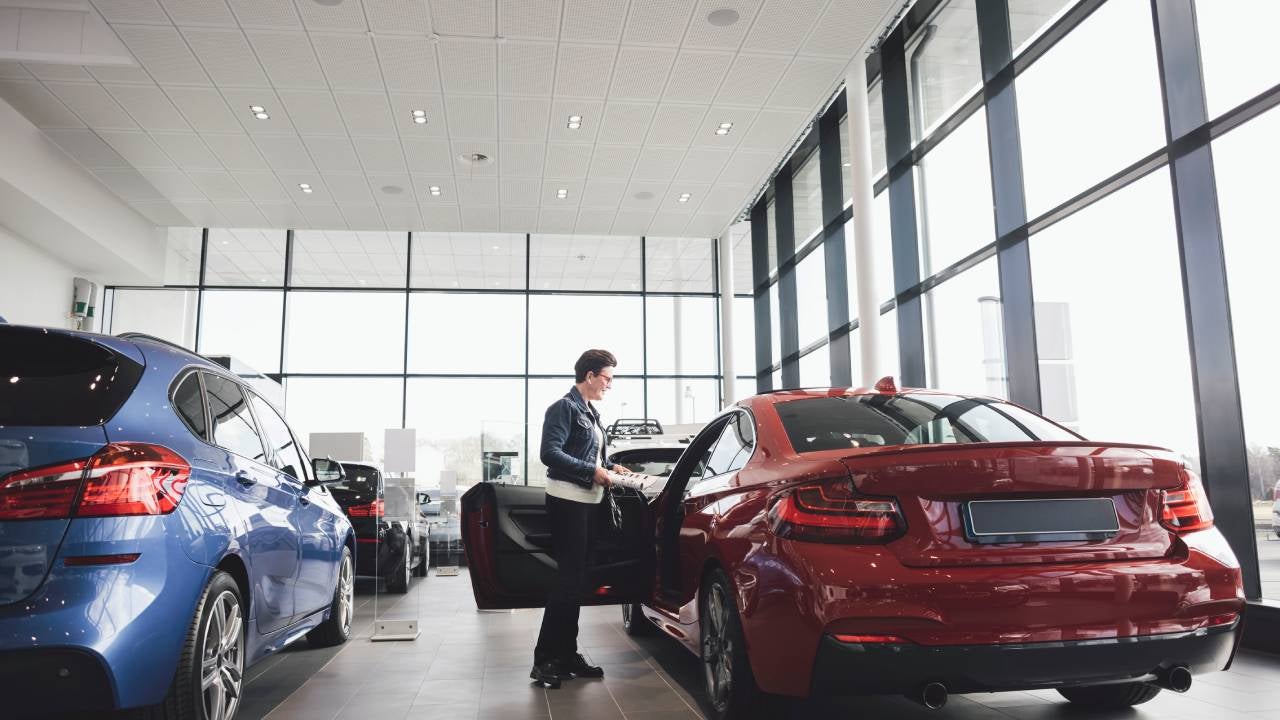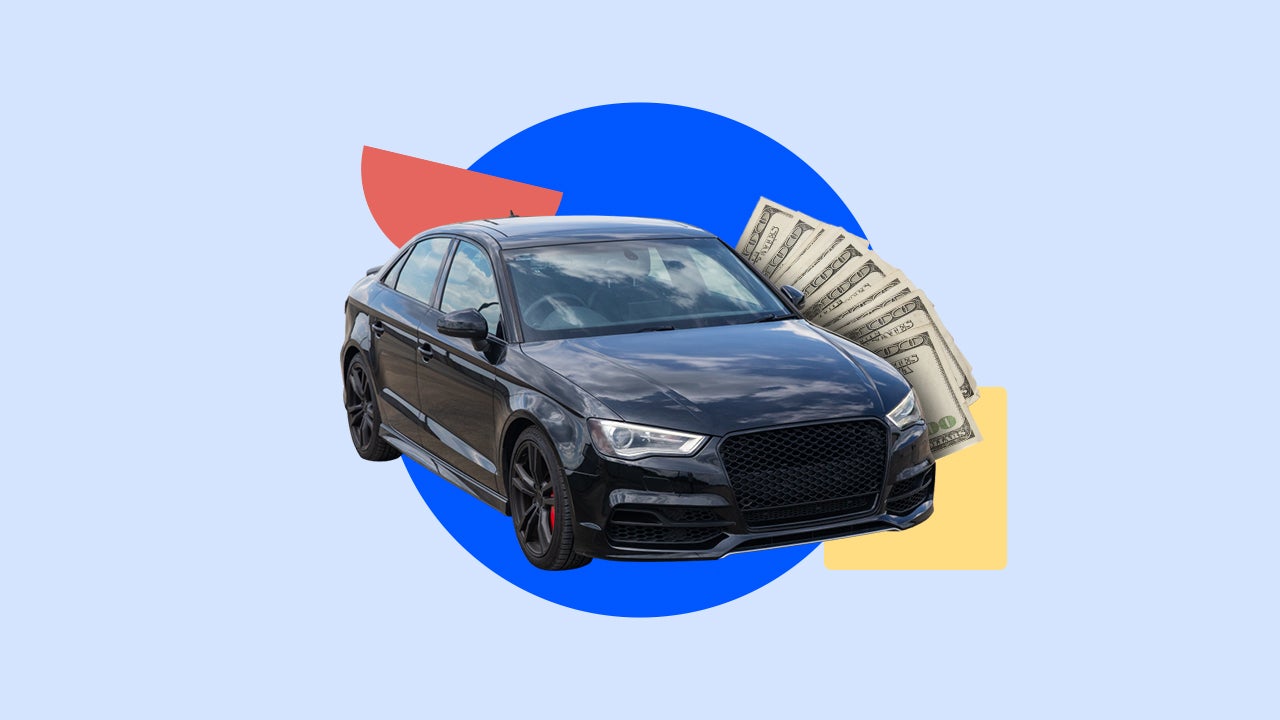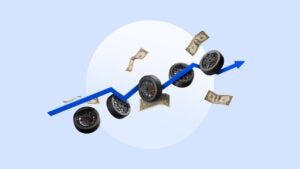Average car payments in 2025: What to expect

Key takeaways
- Car prices, monthly payments, and insurance costs all rose during 2024.
- Good credit scores are key to securing good auto loan rates.
- APRs are decreasing for super prime and prime borrowers but rising for all other borrowers.
- Consumers should keep an eye on increased overall costs for new and used vehicles and should calculate their car budget carefully.
Despite the rising costs of new vehicles, new car purchases increased in the third quarter of 2024 while used vehicle purchases remained the same. This may be due to a shortage of used cars, which has inflated their prices. In some cases, buyers’ monthly payments on new cars are marginally higher compared to what they would pay on a used car.
Car buyers were somewhat less likely to finance a new car purchase. Those who did were more likely to finance through captive finance companies, which offer competitive incentives such as 0 percent APR car deals, rather than banks and credit unions.
Whether you have poor credit or are looking to refinance your current loan, it’s important to understand typical monthly payments and rates so you can feel confident that you are getting the best deal.
Car payment statistics
- Experian’s quarterly State of the Automotive Finance Market report found that the average monthly car payment for new cars is $742, while used cars had a slightly lower payment of $525.
- 44.21 percent of vehicles financed in the fourth quarter of 2024 were new vehicles. Financing for used vehicles sat at 55.79 percent in the same quarter.
- 17.04 percent of new car payments were over $1,000, while only 10.34 percent of new car payments were under $400.
- The average cost of full coverage car insurance is about $223 per month.
- New loan amounts increased slightly, year over year in the fourth quarter, from $40,484 in 2023 to $41,572 in 2024.
- Captive financing is still the most common lender option for new loans at 47.66 percent.
What is the average monthly car payment?
Though the current average monthly payment for a new and used car is $737 and $520, respectively, car payments are based on more than just the cost of the vehicle. You can calculate your car payment based on the amount you borrow, your annual percentage rate (APR) and loan term. Because car prices and APRs are both high compared to pre-pandemic numbers, so are average monthly car payments.
The following table shows the average cost of the individual charges that make up a car payment and the average term for a car loan for the fourth quarter of 2024:
| Key specs | New cars (avg.) | Used cars (avg.) |
|---|---|---|
| Monthly car payment | $742 | $525 |
| Loan amount | $41,572 | $26,468 |
| Interest rate | 6.35% | 11.62% |
| Loan term | 67.98 months | 67.20 months |
Budgeting for car payments
Figuring out your budget for an auto loan can be tricky. It’s tempting to think in terms of monthly payments, but this can be deceptive. Low payments mean longer terms and more total interest, increasing the overall cost of your vehicle. And remember, your vehicle will be losing value while you’re making those payments.
Bankrate Chief Financial Analyst Greg McBride, CFA, advises people to consider the total payments over the loan term. “The $35,000, six-year loan at an eight percent rate costs more than $44,000,” he explains. “Yet the vehicle will only be worth about one-third of what you paid for it six years from now. ”
He reminds drivers to account for additional costs like maintenance, insurance, and repairs that come up throughout ownership. “Vehicle costs can be budget-busters that become difficult to get out from under,” he explains. Budgeting for these costs from the start ensures you won’t feel cash-strapped once you’re already committed to your loan.
Shop around for the best auto loan rates and take advantage of prequalification opportunities to compare what different lenders are willing to offer you based on your finances.
How to calculate how much your car costs
Calculating your car’s cost gives you a better sense of the monthly payment you can afford. To determine how much your vehicle will truly cost, you must make some estimates.
- Use Edmunds’ car maintenance calculator to factor in the average cost based on your vehicle.
- Add the cost of car insurance. Some vehicles may have higher insurance premiums based on factors like safety features and repair costs.
- Calculate your estimated fuel costs using your car’s average miles per gallon, your estimated monthly mileage, and the average fuel costs in your area.
- Factor in the registration fees and taxes you’ll have to pay, along with the vehicle depreciation.
Reduce your monthly payments — and total purchase cost — by making a down payment. According to Edmunds, drivers put down on average $6,619 for new (16 percent) and $4,165 for used vehicles (15 percent) in the third quarter of 2024. If you have a trade-in, that would also count toward your down payment.
Average auto loan rates and amount
Average rates are currently high. The benchmark rate, which is the rate banks charge to lend money to other banks, declined to 4.25-4.5 percent in December. This affects rates on consumer products like car loans, but although there was a significant change in the fed rate over 2024, interest rates have not seen a decrease.
In fact, auto loan interest rates increased between the third and fourth quarter of 2023. To make sure you are getting the most competitive rate, explore different lender types and use prequalification to find the best rate.
| Credit score | New cars | Used cars |
|---|---|---|
| 781 to 850 (super prime) | 4.77% | 7.67% |
| 661 to 780 (prime) | 6.40% | 9.95% |
| 601 to 660 (nonprime) | 9.59% | 14.46% |
| 501 to 600 (subprime) | 13.08% | 19.38% |
| 300 to 500 (deep subprime) | 15.75% | 21.81% |
Average loan amounts have seen a steady increase since 2022, which is likely driven, in part, by increased vehicle prices during that same timeframe. New vehicles had an average price of $47,401 in January 2025, according to data from KBB, while used vehicle prices increased to $25,328.
| Credit score | New cars | Used cars |
|---|---|---|
| 781 to 850 (super prime) | $39,889 | $28,712 |
| 661 to 780 (prime) | $43,695 | $27,681 |
| 601 to 660 (nonprime) | $43,405 | $25,187 |
| 501 to 600 (subprime) | $38,688 | $22,051 |
| 300 to 500 (deep subprime) | $34,323 | $20,199 |
How credit scores affect car payments
Lenders use your credit score to estimate the risk that you will not repay your loan. You will likely be offered more competitive rates if you have a strong credit history.
As this graph shows, borrowers with the highest scores (falling between 781 and 850) secure the lowest monthly payments for new vehicles and the second-lowest monthly payments for used vehicles. Further, rates for prime and super prime borrowers have been decreasing for new car loans, while all other borrowers have seen steady increases to their rates, according to Experian.
Average auto loan terms
Auto loans are available in 12-month increments, ranging from 24 to 96 months. The most common terms are 60 and 72 months, but 84-month terms are becoming more common.
Finding a lower rate by shopping with multiple lenders can be a more cost-effective way to lower your monthly payment. However, that can be challenging if you have poor credit or minimal credit history. Comparing bad credit auto loan lenders may help you secure a more competitive rate.
| Credit score | New cars | Used cars |
|---|---|---|
| 781 to 850 (super prime) | 63.56 months | 65.54 months |
| 661 to 780 (prime) | 71.15 months | 68.39 months |
| 601 to 660 (nonprime) | 74.27 months | 68.07 months |
| 501 to 600 (subprime) | 73.54 months | 66.19 months |
| 300 to 500 (deep subprime) | 72.33 months | 63.75 months |
When shopping for the best auto loan rate, it is important to consider more than just the monthly payment. Weigh how much you’ll pay in interest and fees across the entire loan term. A longer term means lower monthly payments but a higher cost overall.
And that’s not the only problem long terms pose. “An extended loan term not only increases the total interest tally, but it means more years of being upside-down – owing more than the car is worth. This becomes a sudden problem if the vehicle is stolen or totaled in an accident and the insurance proceeds are less than the remaining balance on the loan,” McBride explains.
Ultimately, there is no perfect term. The right one for you depends on your budget and needs.
Auto loan delinquency by age
Auto loan delinquency is when a borrower is late or behind in making their auto loan payments. Generally, accounts are considered delinquent once they are 30 days overdue; when they are 90 days overdue, they enter default, and the borrower’s car may be repossessed.
During 2024, the rates at which borrowers became at least 90 days delinquent on their auto loans surpassed pre-pandemic levels, according to Federal Reserve (FRED) reporting. A number of factors are driving these delinquencies. According to Experian, auto loan balances have been rising steadily since 2022, increasing 1.1 percent year over year from 2023.
Rising interest rates have also added additional financial strain for car buyers. As the graph below indicates, the current uptick in delinquencies began in the third quarter of 2021, the same time the current inflationary period began.
Consumers are financially stressed. Of U.S. adults, 47 percent say money has a negative impact on their mental health at least occasionally, according to Bankrate’s Money and Mental Health Survey. Among them, 47 percent cited being in debt as a factor that negatively impacted their mental health.
While delinquencies have increased across all age groups, younger buyers have been impacted the most. This may indicate that factors such as shorter credit histories and lower savings reserves are also factors driving at least some of these delinquencies.
Bottom line
Although auto loan rates are affected by many factors beyond your control, smart choices can put you in the driver’s seat when it comes to this big purchase. Current interest rates will make monthly payments more expensive, so be patient. Take the time to compare different rates and build your credit score to qualify for better auto loan rates.






